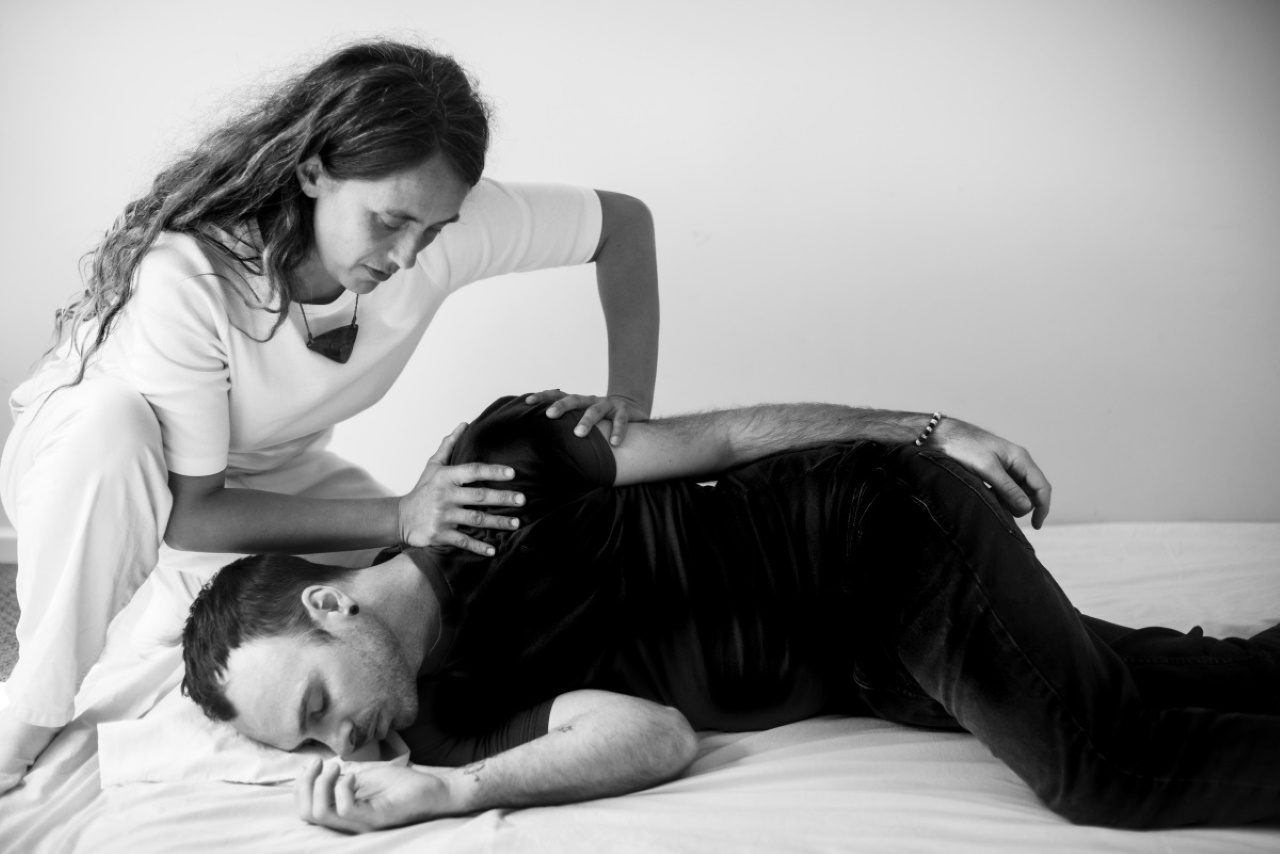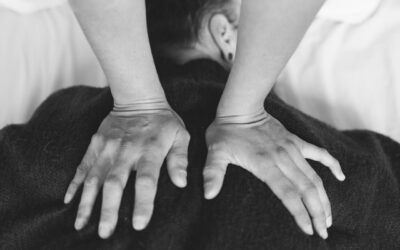Introduction to Shiatsu Massage
Shiatsu has evolved and diversified into various schools with different philosophical orientations, some more focused on spirituality and Eastern philosophy. This evolution has led to the development of different styles such as Shiatsu-Do, Nippon Shiatsu, Movement Shiatsu, Zen Shiatsu, and Healing Shiatsu, each with its unique characteristics and emphases. For example, Shiatsu-Do focuses on whole body routines and stretches, aiming to balance the body’s energy flow and promote overall wellness, while Nippon Shiatsu emphasizes the application of pressure to specific points along the body’s meridians, drawing from traditional Chinese medicine principles to address specific health concerns and imbalances. Understanding the historical roots and the diverse styles of Shiatsu massage provides valuable insights into the practice and its relevance in contemporary wellness and alternative medicine.
Shiatsu massage has been around for centuries and is uniquely Japanese. It began as a modification of the traditional Chinese massage called Tui Na and eventually evolved into a distinct form of therapy known as Shiatsu. The understanding of the history and diverse styles of Shiatsu massages can help individuals determine if this technique is a good fit for their wellness needs.
The Historical Roots of Shiatsu Massage
The historical roots of Shiatsu massage can be traced back to the ancient traditions of Chinese medicine and their adaptation into Japanese culture. This fusion of ideas led to the transformation of the traditional Chinese massage, Tui Na, into Anma, a form of massage therapy that eventually evolved into Shiatsu. An example of this historical evolution is the publication of the book “Shiatsu Ho” by Tamai Tempaku in 1925, which marked the founding of the first Association of Healers in Shiatsu. This pivotal moment in history solidified the principles and techniques of Shiatsu massage, setting the stage for its further development and widespread practice. The emergence of this association signified the formal recognition and organization of Shiatsu as a distinct form of therapy, laying the groundwork for the diverse styles and forms of Shiatsu massage that are practiced today.
According to historical accounts, Shiatsu originated in Japan in the early 20th century, with its roots in traditional Chinese medicine and the anmo technique. The transformation of anmo, a Chinese technique, into a new form of therapy that combined samurai recovery practices reflects the deep cultural integration and evolution of Shiatsu massage. This historical context underscores the rich tapestry of influences that have shaped the development of Shiatsu into a revered and time-honoured practice.
Key Figures in the Development of Shiatsu Massage
The development of Shiatsu massage is indebted to several key figures who have played instrumental roles in shaping its evolution. Among these influential figures are Tokujiro Namikoshi, Shizuto Masunaga, and Katsusuke Serizawa. Tokujiro Namikoshi stands out for his pioneering contributions, having founded the first pressure therapy clinic in 1929 and played a decisive role in the development of modern Shiatsu. His innovative techniques and clinical practice laid the foundation for the widespread recognition and adoption of Shiatsu as a therapeutic massage modality.
Additionally, Shizuto Masunaga, a distinguished student of Namikoshi, made a significant impact by creating Zen Shiatsu. This development expanded the repertoire of Shiatsu massage techniques, incorporating elements of spirituality and Eastern philosophy into the practice, thus enriching its cultural and philosophical dimensions. Moreover, Katsusuke Serizawa’s introduction of Acupressure Shiatsu further diversified the range of Shiatsu massage methods, catering to a broader spectrum of preferences and needs within the field of bodywork therapies.
Influential figures such as Namikoshi, Masunaga, and Serizawa have not only contributed to the technical and methodological aspects of Shiatsu massage but have also played a pivotal role in its cultural, philosophical, and therapeutic enrichment, shaping it into the multifaceted practice it is today. Their collective influence has been instrumental in establishing Shiatsu as a respected and widely practiced form of alternative medicine, with a rich tapestry of techniques and philosophies that continue to benefit individuals seeking holistic wellness and vitality enhancement.

Evolution and Incorporation of Concepts
The incorporation of concepts from physiology, psychology, and traditional Chinese medicine has played a crucial role in the evolution of Shiatsu massage. This integration has allowed Shiatsu to diversify into various schools with different philosophical orientations, catering to a wide range of individuals seeking its therapeutic benefits. For example, some schools of Shiatsu place a strong emphasis on spirituality and Eastern philosophy, aligning with the holistic approach of promoting physical and mental well-being.
The incorporation of meridian theory from traditional Chinese medicine into Shiatsu practice has been a significant development. Meridians are energy pathways in the body, and the application of Shiatsu techniques along these meridians is believed to promote the balance and flow of vital energy, or “Ki.” This incorporation demonstrates how Shiatsu has adapted and integrated concepts from traditional Chinese medicine to enhance its therapeutic effectiveness and provide a more comprehensive approach to wellness. The incorporation of such concepts has not only enriched the practice but has also contributed to its growing relevance and acceptance within the broader context of alternative medicine practices.
Shiatsu has evolved to incorporate concepts from physiology, psychology, and traditional Chinese medicine, leading to its diversification into various schools with different philosophical orientations. This evolution has made Shiatsu a versatile and adaptable therapy, offering a spectrum of styles and approaches that cater to diverse individual needs and preferences.
Different Styles and Forms of Shiatsu Massage
Shiatsu massage encompasses a wide range of styles and forms, each with its own distinctive characteristics and emphases. For example, Movement Shiatsu incorporates gentle or vigorous techniques, often involving guided movement and manipulations to release tension and restore mobility. This style is particularly beneficial for individuals seeking relief from physical discomfort or restricted movement. Understanding the diverse range of styles and forms within Shiatsu massage enables practitioners and recipients to choose an approach that aligns with their individual preferences and wellness goals, contributing to the growing popularity and acceptance of Shiatsu as a comprehensive therapy.
In contemporary practice, Shiatsu-Do, Nippon Shiatsu, Movement Shiatsu, Zen Shiatsu, and Healing Shiatsu are some of the diverse styles and forms of Shiatsu massage available. Each form combines components of traditional styles in one way or another, and understanding the unique characteristics and emphases of each style allows individuals to select the most suitable approach for their wellness needs. This diversity underscores the adaptability and versatility of Shiatsu massage, making it a widely accessible and comprehensive therapy for promoting holistic well-being.
Principles and Techniques of Shiatsu Massage Therapy
Shiatsu massage therapy is rooted in the fundamental principles of traditional Chinese medicine and Japanese culture. It encompasses the manipulation of Ki, which refers to the body’s vital energy, and the application of pressure on specific points known as acupressure points. The manipulation of Ki is central to Shiatsu, as it aims to balance the flow of energy within the body, promoting holistic wellness and vitality. This technique is based on the concept of meridians, which are energy pathways that connect different parts of the body and correspond to specific organs and functions.
In the context of Shiatsu massage therapy, the comprehensive hands-on training programs provided by the Shiatsu Bodywork Academy in New Zealand offer individuals the opportunity to gain in-depth knowledge and practical experience in applying Shiatsu techniques effectively. The academy’s emphasis on the manipulation of Ki, the application of pressure on acupressure points, and the holistic approach to promoting wellness equips aspiring practitioners with the necessary skills to provide personalised and effective Shiatsu treatments to support the overall health and vitality of their future clients.
Shiatsu Massage in the Context of Alternative Medicine
Shiatsu massage is a traditional Japanese bodywork practice that has gained increasing relevance and acceptance within the field of alternative medicine. Its unique principles and methods distinguish it from other alternative medicine bodywork practices, making it a distinctive approach to promoting holistic wellness and vitality.
The growing acceptance of Shiatsu massage as part of alternative medicine practices is evident in the increasing number of wellness centres, spas, and healthcare facilities incorporating Shiatsu into their service offerings. Its unique approach to holistic wellness and vitality enhancement has attracted individuals seeking alternative and complementary therapies to support their overall health. Additionally, the integration of Shiatsu into mainstream healthcare settings reflects its recognition as a valuable modality for promoting physical, mental, and emotional well-being in diverse populations.

Legal Approval and Recognition of Shiatsu Massage
Shiatsu massage has a rich history of legal recognition and approval, particularly in its country of origin, Japan. It has been formally acknowledged as an integral part of Anma massage and has gained recognition as a therapeutic practice in its own right within the Japanese healthcare system. This legitimization has solidified the position of Shiatsu as a respected and regulated form of therapy, highlighting its significance in the realm of traditional Japanese medicine and alternative healing practices.
The impact of the U.S. Occupational Forces on traditional therapies in Japan, including Shiatsu massage, has been profound. During the American occupation of Japan following World War II, the U.S. forces played a pivotal role in the evolution and standardization of traditional therapies. This influence contributed to the formal recognition and regulation of Shiatsu massage, further establishing it as a reputable and legitimate form of therapy within the Japanese healthcare framework. As a result, Shiatsu has become an essential component of the holistic and integrated approach to healthcare in Japan, underlining its enduring relevance and impact on individual wellness and vitality. This historical context demonstrates the enduring significance of Shiatsu massage and its evolution as an established and recognized therapeutic practice.
Benefits of Learning Shiatsu Therapy at the Shiatsu Bodywork Academy
The Shiatsu Bodywork Academy in New Zealand offers a comprehensive training program in Shiatsu therapy, aiming to equip individuals with the ancient healing techniques of Shiatsu while promoting overall wellness, stress reduction, and vitality enhancement. The academy’s hands-on training programs are designed to provide practical experience and in-depth knowledge for individuals who aspire to become skilled Shiatsu practitioners. By enrolling in the academy’s training programs, individuals not only acquire technical expertise in Shiatsu therapy but also gain a deep understanding of the principles and philosophies that underpin this traditional Japanese bodywork practice. This holistic approach to education fosters a well-rounded understanding of Shiatsu therapy and its role in promoting physical, emotional, and mental wellness. The academy’s commitment to providing a supportive and immersive learning environment underscores its dedication to nurturing skilled practitioners who are capable of making a meaningful impact on the health and vitality of individuals and communities. As a result, the Shiatsu Bodywork Academy stands as a compelling choice for those seeking to embark on a journey of learning and personal growth within the realm of Shiatsu therapy, with the potential to positively impact the lives of others through the healing art of Shiatsu massage.
In conclusion, the history and evolution of Shiatsu massage reflect a rich tapestry of cultural and philosophical influences, making it a unique and valuable practice in the realm of alternative medicine. The diverse styles and forms of Shiatsu, along with the principles and techniques that underpin this ancient healing art, contribute to its enduring relevance and acceptance in promoting holistic wellness and vitality. For individuals seeking to explore the ancient healing techniques of Shiatsu and embark on a journey of personal and professional growth, the Shiatsu Bodywork Academy in New Zealand offers a pathway to acquiring the skills and knowledge required to become proficient and compassionate Shiatsu practitioners. To explore these opportunities and learn more about the academy, visit their website at Shiatsu Bodywork Academy for detailed information and enrollment procedures.
This article was originally published on Shiatsu Bodywork Academy






